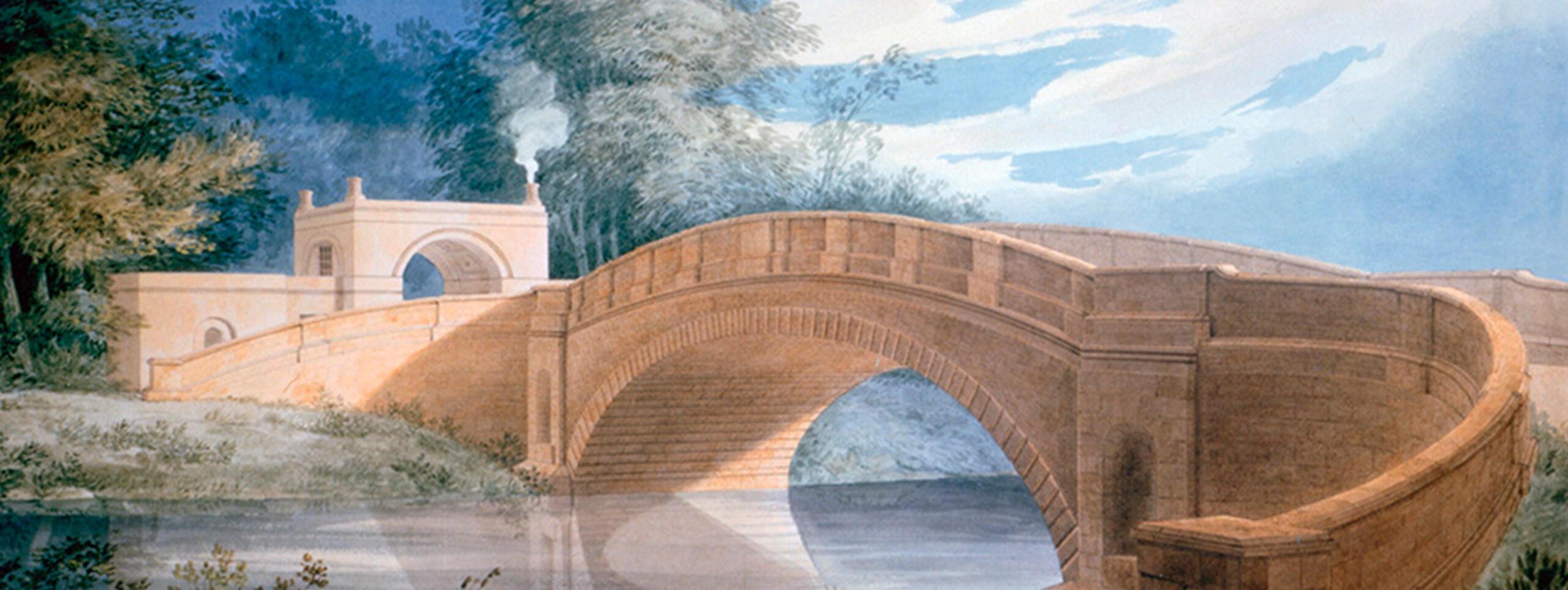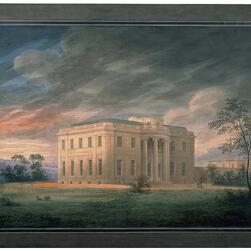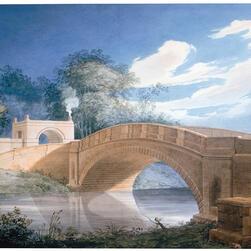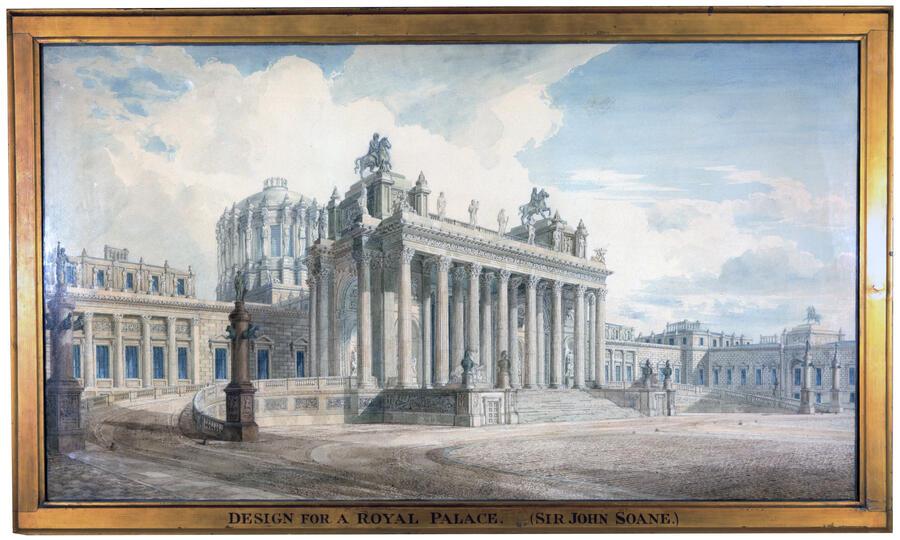by Frances Sands, Curator of Drawings and Books
Following a Grand Tour of 1794-97, the extraordinarily skilled artist, architect and draughtsman Joseph Michael Gandy (1771-1843) returned to London at a time of economic instability. With the French Revolutionary Wars ongoing, the economic climate in Britain was one of hesitancy. It would have been near impossible for Gandy to establish himself in private practice either as an artist or an architect, particularly as he was from a humble background – one of twelve children of a waiter – and required an income. It was necessary for Gandy to take employment as a draughtsman within the architectural office of Sir John Soane. Although this position was short-lived, and Gandy established his independent practice in 1801, he remained impecunious throughout his life, and was dependent on freelance employment from Soane until the latter’s death in 1837. Between 1800 and 1838, Gandy’s private practice produced few architectural works, and he focused principally on painted architectural fantasies, reminiscent of the work of Giovanni Batista Piranesi, and these were exhibited almost annually at the Royal Academy.
Gandy’s unparalleled skill as an architectural draughtsman must have been immediately evident to Soane. Even when he was employed as an office draughtsman in 1798-1801, his time was generally preserved for the production of lavish presentation and exhibition drawings, rather than the more work-a-day activities of other draughtsmen who churned out reams of drawings: scaled versions of Soane’s design drawings, office record copies and working drawings for the instruction of builders and craftsmen. Very shortly after his arrival in the office, Soane dispatched Gandy to Tyringham Hall in Buckinghamshire. This was Soane’s largest country house project, which he designed from 1797. Moreover, it was one of Soane’s happiest projects, doubtless as his client, a banker, William Praed, gave him considerable free rein over the design. Upon Soane’s completion of Tyringham, Gandy spent nine days there from 27 July to 7 August 1798 in order to make a series of exquisite presentation and exhibition drawings for Soane to record and commemorate his work.







